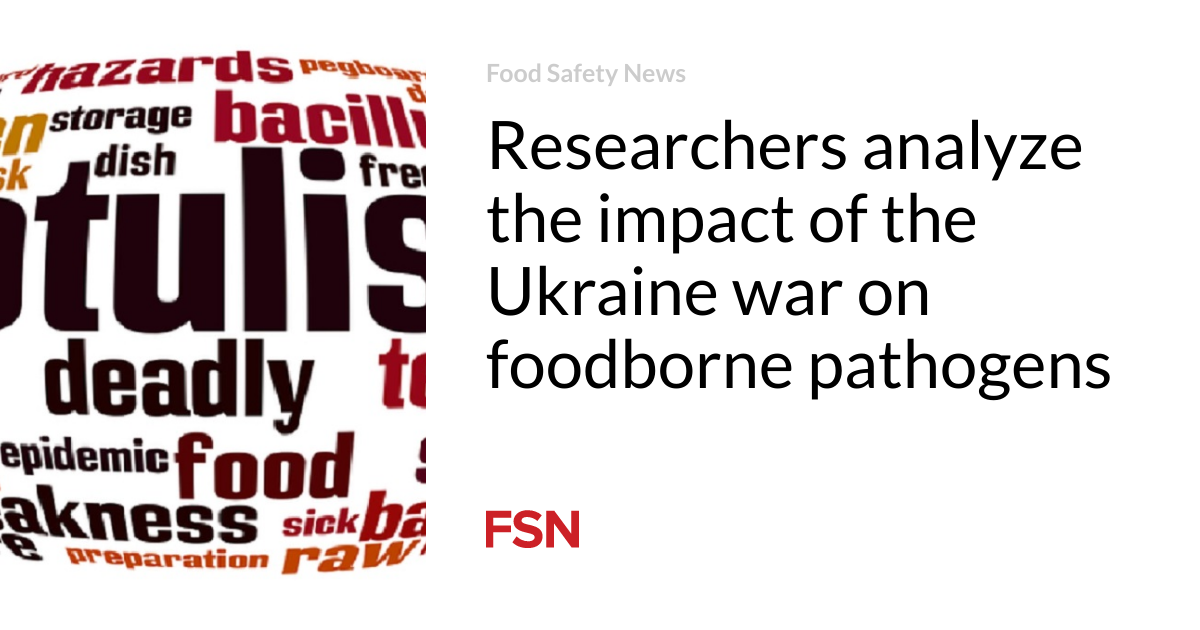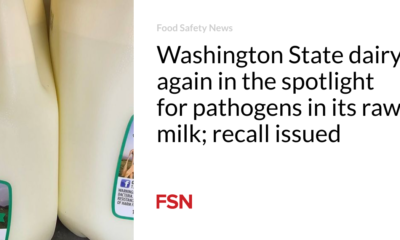Food
Researchers analyze the impact of the war in Ukraine on foodborne pathogens

Scientists have found an increase in botulism and salmonellosis in Ukraine compared to before the invasion by Russia.
To analyze the effects of the war on the epidemiology of infectious diseases, researchers used open-source data on eight diseases from EPIWATCH, an artificial intelligence early warning system.
They looked at patterns of infectious diseases before and during the conflict. Before was defined as from November 2021 to February 23, 2022, and during was classified as February 24 to July 31, 2022. The findings were published in the journal Emerging infectious diseases.
Conflict situations increase the risk of epidemics, and the disruption or cessation of public health surveillance creates difficulties in detecting them.
Water supplies in cities like Mariupol are unsafe to drink due to damaged sewers and leakage of raw sewage into rivers and streams, yet many people still consume contaminated water. A lack of regular housing and shelter reduced caloric intake, and poor hygiene and sanitation increased the risk of infectious diseases.
After February 2022, formal surveillance of most infectious diseases was halted and reporting of notifiable diseases was reduced. While formal systems continued to report cases of botulism, the analysis found that numbers were likely underestimated.
Data from the Ukrainian Ministry of Health shows that from early 2024 to mid-July, 39 cases of botulism were registered, compared to 45 cases in the same period last year. In June, 15 people were admitted to hospitals diagnosed with botulism, usually after eating dried fish and homemade canned meat.
More Botulism and Salmonella Reports
Open source data can help overcome the lack of formal disease surveillance by leveraging information from news media, medical organizations, and social media sources. Scientists say artificial intelligence (AI) can generate early warning signals from open source data and provide epidemiological information about infectious diseases in the absence of formal surveillance in a war zone.
Researchers identified 805 outbreak reports from February 24 to July 31, 2022 in EPIWATCH. By comparison, 259 reports were collected three months before the conflict. From February 24 to July 31, 2021, there were 180 reports. This indicates a large increase during the conflict.
During the period during the conflict, the number of cases of botulism increased from 22 to 122 reports and of salmonellosis from 4 to 39 reports. For botulism, the number of cases identified through EPIWATCH was lower than the number identified through formal surveillance.
Researchers said they were able to identify epidemics such as botulism during the conflict.
“We have demonstrated the value of using open-source epidemic intelligence to inform unfolding epidemics and public health priorities in a conflict zone where formal surveillance is limited or lacking.
“The increase in cholera and gastroenteritis reflects the decline in hygiene and sanitation during the conflict, including the lack of access to safe drinking water and toilets and the subsequent improper disposal of fecal waste.”











